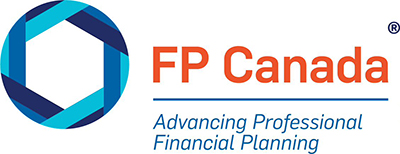Canadian retirees with investments in a Registered Retirement Income Fund (RRIF) must withdraw a minimum amount each year starting at age 72. Should they withdraw more – and start earlier?
TORONTO, April 25, 2023 /CNW/ - Whether they're focused on routine living expenses or their estates, retirees hope to maximize their future funds. Many believe withdrawing more than required from their RRIF each year – and doing so early – will help them achieve this goal.
The truth is more complex. When helping retirees choose the right withdrawal strategy, financial planners must consider the full complexity of their circumstances.
The FP Canada Research Foundation has funded research assessing the value of withdrawing more from RRIFs than required, earlier on. It was carried out by Doug Chandler, an actuary specializing in retirement research and an Associate Fellow of the National Institute on Ageing.
"This research has practical applications for all financial planners who work with clients in retirement," said Joan Yudelson, Executive Director, FP Canada Research Foundation. "With Doug Chandler's expertise, we've uncovered insights that can help planners assist retirees in making more informed decisions."
The research is especially significant given larger discussions around RRIF withdrawal strategies. Some stories in the media emphasize opportunities to take advantage of differences in tax brackets, for example.
Notably, financial planners recently surveyed said withdrawing a higher level of RRIF assets, up to the threshold of a client's current tax bracket, was their top option for increasing the client's income in the most tax-efficient way.
Put simply, some planners may be relying on rules of thumb, oversimplifying complex sets of circumstances. This may be a problem for clients, as the research shows that projections based on just one potential future scenario are unreliable and misleading.
While it may be helpful for some, the research concludes that the value of withdrawing more than necessary from a RRIF – and withdrawing before the age of 72 – may be overstated. As an example, perceived advantages often disappear for those whose investment returns vary from the average expected return.
Financial planners considering RRIF strategies for a client must consider factors like the client's potential lifespan and future returns on investment, keeping in mind that projections based on a single age and set of returns can create undue risk.
"When helping a client determine when and how to withdraw from a RRIF, there are complexities involved, and many unknowns," said Doug Chandler. "This research demonstrates the importance of seeing the bigger picture. That means accounting for things like current and future tax rates, income-splitting opportunities, investment risks and returns, and more."
The bottom line is, there is no one-size-fits-all approach to creating a RRIF withdrawal strategy. Financial planners must continue to rely on a combination of professional judgment and financial models.
Visit the FP Canada Research Foundation website to find the research paper and executive summary. You'll also find the practice notes, which are designed to help financial planners apply insights from the research.
You can view a video featuring Doug Chandler and representatives from two financial planning software firms, which delves into further discussion of the research and implications for practice.
The FP Canada Research Foundation is an independent registered charity dedicated to funding, promoting, and disseminating financial planning research to enhance the well-being of all Canadians. The Foundation is committed to technical research that examines and challenges current practices in financial planning, behavioural research that examines the impact of human behaviour on effective financial planning, and research that examines the benefits of financial planning on society as a whole.
SOURCE FP Canada

For media inquiries, please contact: Megan Harman, FP Canada, [email protected]

Share this article